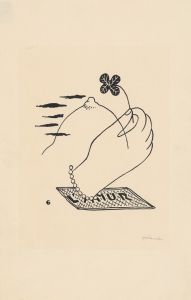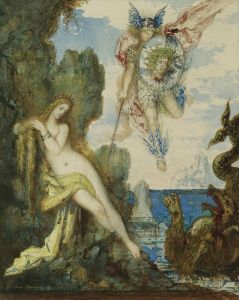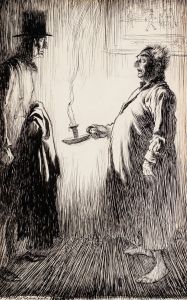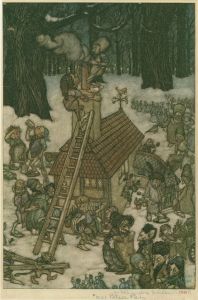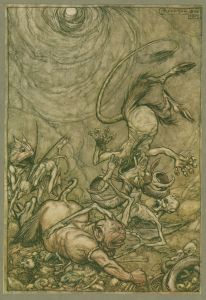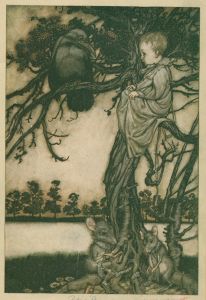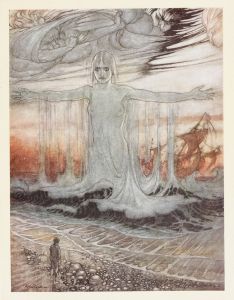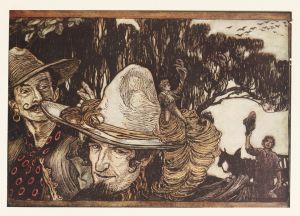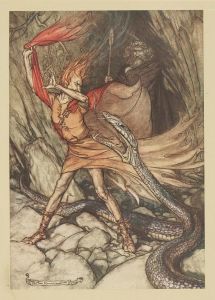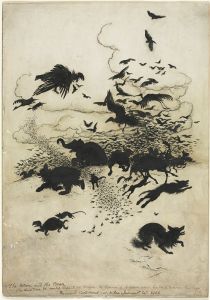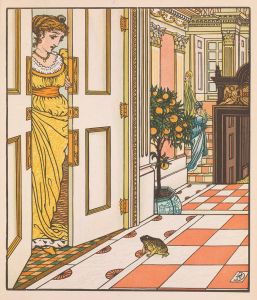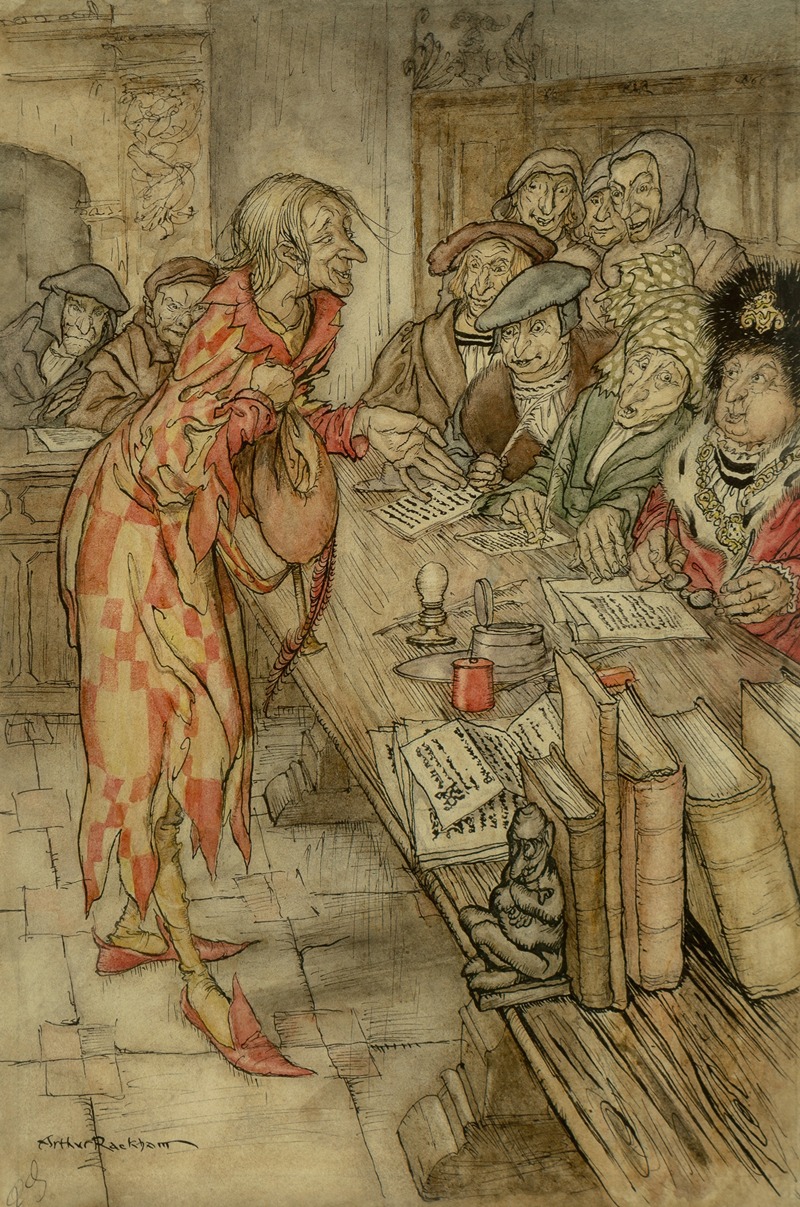
In Did Come the Strangest Figure
A hand-painted replica of Arthur Rackham’s masterpiece In Did Come the Strangest Figure, meticulously crafted by professional artists to capture the true essence of the original. Each piece is created with museum-quality canvas and rare mineral pigments, carefully painted by experienced artists with delicate brushstrokes and rich, layered colors to perfectly recreate the texture of the original artwork. Unlike machine-printed reproductions, this hand-painted version brings the painting to life, infused with the artist’s emotions and skill in every stroke. Whether for personal collection or home decoration, it instantly elevates the artistic atmosphere of any space.
Arthur Rackham was a prominent English book illustrator known for his distinctive style, which combined haunting, ethereal elements with intricate detail. His work was particularly influential during the Golden Age of British book illustration, which spanned from the late 19th century to the early 20th century. Rackham's illustrations often accompanied classic works of literature, including fairy tales, myths, and children's stories.
"In Did Come the Strangest Figure" is one of Rackham's illustrations, created for the 1909 edition of "Undine," a novella by the German Romantic author Friedrich de la Motte Fouqué. "Undine" tells the story of a water spirit who marries a knight in order to gain a soul. The novella explores themes of love, transformation, and the supernatural, making it an ideal subject for Rackham's illustrative style.
Rackham's illustration for "In Did Come the Strangest Figure" captures the mystical and otherworldly atmosphere of Fouqué's tale. His use of muted colors and delicate line work creates a dreamlike quality, drawing viewers into the fantastical world of the story. Rackham was known for his ability to convey emotion and narrative through his art, and this piece is no exception. The figures in the illustration are rendered with a sense of movement and life, enhancing the storytelling aspect of the image.
Rackham's work on "Undine" is part of a larger body of illustrations he produced for various literary works. His illustrations often featured elements of folklore and fantasy, with a particular emphasis on the magical and mysterious. Rackham's ability to blend realism with fantasy made his work highly sought after by publishers and beloved by readers.
Throughout his career, Rackham's illustrations were characterized by their attention to detail and their ability to evoke a sense of wonder. He often employed a technique known as pen and ink with watercolor washes, which allowed him to create intricate, textured images that were both vivid and subtle. This technique is evident in "In Did Come the Strangest Figure," where the interplay of light and shadow adds depth and dimension to the scene.
Arthur Rackham's influence on the field of illustration is significant. His work helped to define the visual language of fantasy and fairy tales in the early 20th century, and his illustrations continue to be celebrated for their artistic merit and imaginative power. Rackham's legacy endures through the continued popularity of the books he illustrated and the ongoing appreciation of his unique artistic vision.
"In Did Come the Strangest Figure" remains a testament to Rackham's skill as an illustrator and his ability to bring stories to life through his art. His work on "Undine" and other literary classics has left a lasting impact on the world of illustration, inspiring generations of artists and readers alike.





